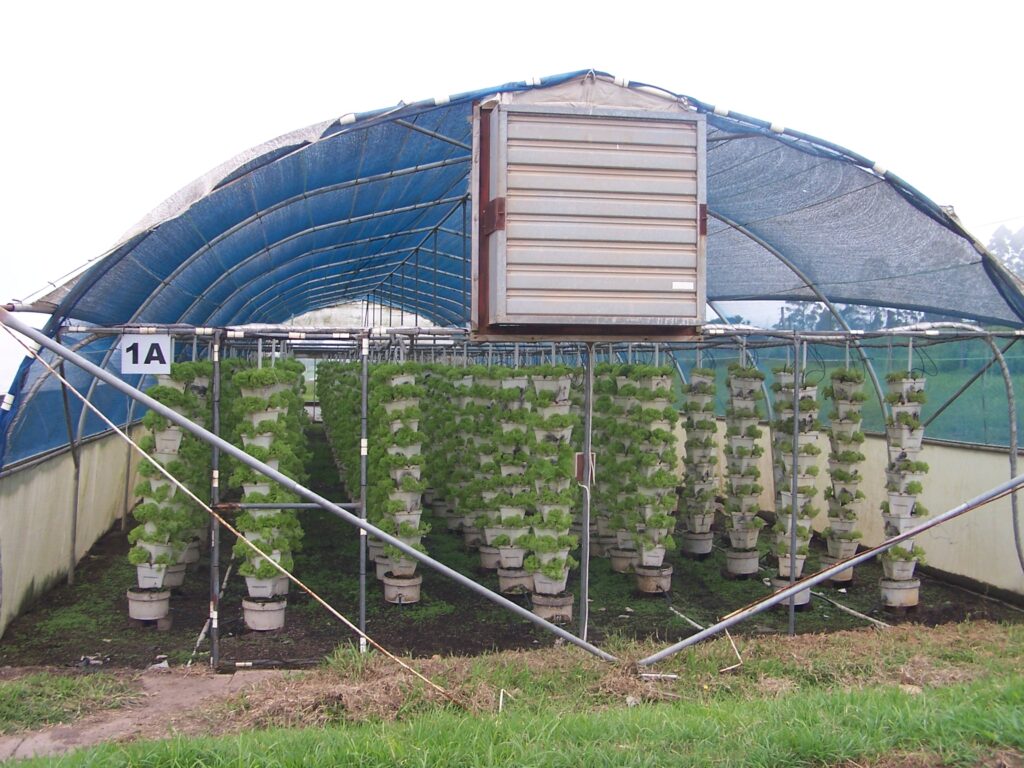We receive many enquiries from people wishing to start up hydroponic businesses. Very often the enquiry consists of single query such as “How much would it cost to set up a hydroponic business?”.
Asking such a question is a bit like asking “How long is a piece of string?” or “How much is a motor car?”
Naturally, many details need to be established before we are able to begin to estimate how much such an investment would be, and the following points must first be established before we are able to proceed to answer such a query:
- Where would the hydroponic farm be established? Give geographical area.
- What are the climatic conditions in that area? Give height above sea level, distance from the nearest coast, average monthly rainfall, average maximum and minimum temperatures.
- Size of the piece of land envisaged for the project. What direction does the land slope towards? Approximate % slope.
- How many m2 will be given over to hydroponics?
- What vegetables/fruit will be grown? Please specify the % of the growing area to be occupied by each crop.
- Please specify what is the source of water i.e. stream, dam, borehole, municipal water, roof-top harvest.
There are specific reasons why we need this information; for example, different crops are grown using different systems so until we know what it is you have in mind to grow we are unable to cost out a system to suit.
Hydroponics

If you want to grow fresh produce hydroponically for home consumption it’s as important that you do it as successfully as you would if you were growing commercially for profit, and to do this you’ll need to be able to answer all the questions above and more. In fact the more you know about the pitfalls the better you’ll be able to avoid paying school fees through making mistakes of which you were unaware because of a lack of learning.
Now an online course can never provide you with the depth of learning that you’ll require if you are going to invest your hard-earned money in a project that may or may not return you a profit depending upon your ability to make the correct decisions.
Here are some examples:
- Did you know that you cannot grow strawberries under plastic? The plastic keeps the heat in, and the humidity generated by the environment and the plants themselves surges too high for the plants to pollinate, so the yields are too low to generate a profit.
- Did you know that South African strawberry cultivars produce berries that have white shoulders and are sour? The sugar content is often lower than a critical 8%. Cultivars originally from California or Florida are ‘day-neutral’ and are much sweeter, redder and have no marketing resistance like South African ones.
- Generally South Africa has a warm climate; did you know that lettuce grows best in a cold climate where the temperature does not exceed 24C? There are also certain essential factors that must be adhered to if one is to grow fresh produce in a hot and/or humid climate – factors which you are unlikely to be taught on Facebook.
- Did you know that if you plant a seedling in a growing medium and the roots bend as they go in to form a ‘J’ then the plant will die?
- Did you know that you can grow vertically in hydroponics and fit 6 times the number of plants in the same area when compared to growing horizontally on the ground? This can save you a fortune in greenhouse space and land but you must do it the right way so that the lower plants don’t suffer from a lack of oxygen and nutrient.
- Most importantly, do you know how to calculate how large an investment you need to make to guarantee that your project will make a profit? A single tunnel or greenhouse can never produce turnover high enough to cover the expenses of maintaining it. You need to be able to calculate where your breakeven point lies so that you can be guaranteed to make a profit. Unless you know this you are doomed to failure.
The list goes on and on and the only way to ensure that you have all the bases covered is to go on a professional course in hydroponics. To find out more go to www.hydroponicssouthafrica.co.za, click on ‘learn’. There are many good books available on the subject.
Tomatoes grow excellently in the Verti-Gro system.
Four plants are placed in the top pot, and they grow outwards and downwards. As the top pot in a 9-pot system is over 2m high there is plenty of room for the plants to grow. Pots below the top two can de dispensed with.
Determinate varieties should be chosen for this procedure as indeterminate ones would grow too long and end up on the floor of the tunnel.
7 000 lettuces can be grown in an 8x 30m tunnel and 9 000 in a 10 x 30m one x 10 crops p.a. = 70 000 and 90 000 heads respectively p.a.

The columns are scientifically spaced so that nutrient water and light distribution are evenly spread to each plant, resulting in even growth top to bottom.
* John Sandison has 3 certificates in Advanced Hydroponics and owner-managed his own hydroponic farm for ten years. He has 24 years’ experience with hydroponics and is the sole South African licensee to mould and market Verti-Gro in Southern Africa. He has written a book titled “Guide to Profitable Hydroponics” available on Amazon.

